Flexible Flanged(Maximum Range of Rotation Number:4,001 to 10,000)
| Shipping Days |
|
|---|
?* Information on days to ship and prices
-
- Promotional pricing
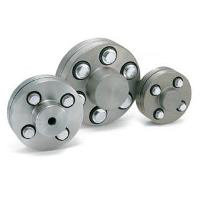
Flange Shape Flexible Shaft Coupling _FCL / FCLS
NABEYA BI-TECH
The most popular flexible shaft coupling used in Japan that complies with the JIS standard.
[Features]
· The most popular flexible shaft coupling used in Japan that complies with the JISB1452-1991 "Flange shape flexible shaft coupling."
· A flexible structure that is made through combining a flange with a coupling bolt.
· Easy to attach.
· Easy to replace the bush by just removing the coupling bolt, which makes maintenance and preservation easy.
· Absorbs misalignment such as eccentricity and declination, and absorbs screw vibrations to prevent noise.
· Does not transmit the thrust load.
· There are two types, namely the FCL cast iron type and the FCLS carbon steel type.- Volume Discount
- 2D / 3D CAD data available
Configure nowStarting from∗ : 244.81 € Special price Min. Shipping Days : 9 Days *Unit price with basic configuration
-
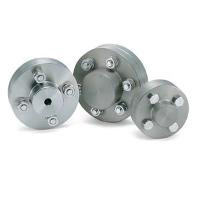
Flange Shape Fixating Axial Coupling _KCL / KCLS
NABEYA BI-TECH
[Features]
· A shaft coupling with a solid type structure that is based on the JISB1451-1991 "Flange shape fixating axial coupling."
· Can match the set mark on the flange outer peripheral face, and can be easily assembled by just tightening the reamer bolt.
· There are two types, namely the cast iron type and the carbon steel type.- 2D / 3D CAD data available
Configure nowStarting from∗ : 240.64 € Min. Shipping Days : 9 Days *Unit price with basic configuration
-
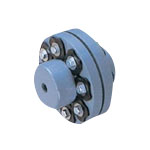
K-7 Coupling F Series
KAYSEVEN
A product that absorbs eccentricity, has no reaction force, and does not require eccentric alignment. Used with various types of pumps, blowers, agitators, NC and MC manufacturing machinery, and machinery used in the textile, agriculture, construction, and mining industries.- Volume Discount
Configure nowStarting from∗ : 79.13 € Min. Shipping Days : 7 Days *Unit price with basic configuration
-
![SNS Flange Shape Flexible Shaft Coupling SCL] (Pump Mounting Side)](//uk.misumi-ec.com/linked/material/mech/INT1/PHOTO/221004957493_001.jpg?$product_view_b$)
SNS Flange Shape Flexible Shaft Coupling SCL] (Pump Mounting Side)
KANEMITSU
JIS B1452 standard. High reliability due to the high speed rotation and shock resistance. Standardized in nominal diameters of ø112 to ø630. A forged product that uses S35C as the material
[Features]
· Satisfies all of the requirements of a flexible shaft coupling.
· Smoothly transmits the power from the shaft.
· Does not transmit the machine vibration or shaft vibration to the other side.
· Does not release any power (thrust) from pushing the shaft from the shaft coupling.
· The rotary shaft can be turned by hand from the outer side while being directly connected.
· The motor can be operated by itself, and inspection can be performed in the rotating direction by removing the coupling element (coupling bolt) and then rotating each of the machine shafts.
· Can easily measure the state of the direct connection (positional relationship of the two shafts) with the machinery.Configure nowStarting from∗ : 101.38 € Min. Shipping Days : 8 Days *Unit price with basic configuration
-
![SNS Flange Shape Fixating Axial Coupling [SRCL]](//uk.misumi-ec.com/linked/material/mech/INT1/PHOTO/221004957471_001.jpg?$product_view_b$)
SNS Flange Shape Fixating Axial Coupling [SRCL]
KANEMITSU
Compatible with use in high ranges of circumferential speeds. Standardized in nominal diameters of ø112 to ø355. A forged product that uses S35C as the materialConfigure nowStarting from∗ : 267.30 € Min. Shipping Days : 9 Days *Unit price with basic configuration
-
![SNSFlange Shape Flexible Shaft Coupling [SCL]](//uk.misumi-ec.com/linked/material/mech/INT1/PHOTO/221004957482_001.jpg?$product_view_b$)
SNSFlange Shape Flexible Shaft Coupling [SCL]
KANEMITSU
JIS B1452 standard. High reliability due to the high speed rotation and shock resistance. Standardized in nominal diameters of ø112 to ø630. A forged product that uses S35C as the material
[Features]
· Satisfies all of the requirements of a flexible shaft coupling.
· 1. Smoothly transmits the power from the shaft.
· 2. Does not transmit the machine vibration or shaft vibration to the other side.
· 3. Does not release any power (thrust) from pushing the shaft from the shaft coupling.
· 4. The rotary shaft can be turned by hand from the outer side while being directly connected.
· 5. The motor can be operated by itself, and inspection can be performed in the rotating direction by removing the coupling element (coupling bolt) and then rotating each of the machine shafts.
· 6. Can easily measure the state of the direct connection (positional relationship of the two shafts) with the machinery.
· * A simple structure that provides complete flexibility.
· The structure is comprised of a coupler body, coupler bolt, and rubber bushes which make it extremely easy to attach and remove.
· The rubber bushes are made of polymer materials and have flexibility, vibration resistance, and complete flexibility.
· * Has compatibility that is demanded anywhere at anytimeConfigure nowStarting from∗ : 199.57 € Min. Shipping Days : 9 Days *Unit price with basic configuration
| Brand |
|---|
| Product Series |
| CAD |
| Starting from∗ |
| Min. Shipping Days |
| Allowable Torque Range(N▪m) |
| Maximum Range of Rotation Number(r/min) |
| Outer Diameter A(φ) |
| Full length W(mm) |
| Features |
| Main Body Material |
| Type |
| Allowable Torque(Nm) |
| Maximum Number of Rotation(r/min) |
| Allowable Lateral Misalignment Range(mm) |
| Allowable Lateral Misalignment(mm) |
| Allowable Angular Misalignment(deg) |
| Application |
| ||||||
| Brand | NABEYA BI-TECH | NABEYA BI-TECH | KAYSEVEN | KANEMITSU | KANEMITSU | KANEMITSU |
| Product Series | SNS Flange Shape Flexible Shaft Coupling SCL] (Pump Mounting Side) | |||||
| CAD |
|
| ||||
| Starting from∗ | 244.81 € Special price *Unit price with basic configuration Promotional pricingVolume Discount | 240.64 € *Unit price with basic configuration | 79.13 € *Unit price with basic configuration Volume Discount | 101.38 € *Unit price with basic configuration | 267.30 € *Unit price with basic configuration | 199.57 € *Unit price with basic configuration |
| Min. Shipping Days | 9 Days | 9 Days | 7 Days | 8 Days | 9 Days | 9 Days |
| Allowable Torque Range(N▪m) | - | - | 50.01 to 100.00 ~ 100 to Less Than 500 | 10.01 to 20.00 ~ 100 to Less Than 500 | 50.01 to 100.00 ~ 1000 to Less Than 5000 | 10.01 to 20.00 ~ 100 to Less Than 500 |
| Maximum Range of Rotation Number(r/min) | 4,001 to 10,000 | 4,001 to 10,000 | 4,001 to 10,000 | 4,001 to 10,000 | 4,001 to 10,000 | 4,001 to 10,000 |
| Outer Diameter A(φ) | 112 ~ 224 | 112 ~ 250 | 125 ~ 160 | 112 ~ 224 | 112 ~ 250 | 112 ~ 200 |
| Full length W(mm) | 83 ~ 164 | 80 ~ 180 | 93 ~ 115 | 40 ~ 80 | 80 ~ 180 | 83 ~ 146 |
| Features | Vibration Absorption | - | Vibration Absorption | Shaft hole Unfinished | Shaft hole Unfinished | Shaft hole Unfinished |
| Main Body Material | Steel | Steel | Steel | - | - | - |
| Type | Main Body | Main Body | Main Body | Main Body | Main Body | Main Body |
| Allowable Torque(Nm) | - | - | 83 ~ 233 | 15.7 ~ 392.2 | 78.4 ~ 1764.7 | 15.7 ~ 245 |
| Maximum Number of Rotation(r/min) | 4300 ~ 6000 | 4200 ~ 6000 | 4500 ~ 4600 | 4300 ~ 6000 | 4200 ~ 6000 | 4800 ~ 6000 |
| Allowable Lateral Misalignment Range(mm) | 0.02 to 0.2 | - | - | - | - | - |
| Allowable Lateral Misalignment(mm) | 0.1 ~ 0.2 | - | - | - | - | - |
| Allowable Angular Misalignment(deg) | 1/6 | - | - | - | - | - |
| Application | Standard | Standard | Standard | Standard | Standard | Standard |
Loading...
Filter by:
-
Allowable Torque Range(N▪m)
-
Maximum Range of Rotation Number(r/min)
- 301 to 1,000
- 1,001 to 2,000
- 2001 to 4,000
- 4,001 to 10,000
-
Outer Diameter A(φ)
-
Full length W(mm)
-
Features
-
Main Body Material
-
Type
- Main Body
- Related Components
-
Allowable Torque(Nm)
-
Maximum Number of Rotation(r/min)
-
Allowable Lateral Misalignment Range(mm)
-
Allowable Lateral Misalignment(mm)
-
Allowable Angular Misalignment(deg)
-
Application
CAD data type
-
- 2D
- 3D



![SNS Flange Shape Flexible Shaft Coupling SCL] (Pump Mounting Side)](http://uk.misumi-ec.com/linked/material/mech/INT1/PHOTO/221004957493_001.jpg?$product_view_b$)
![SNS Flange Shape Fixating Axial Coupling [SRCL]](http://uk.misumi-ec.com/linked/material/mech/INT1/PHOTO/221004957471_001.jpg?$product_view_b$)
![SNSFlange Shape Flexible Shaft Coupling [SCL]](http://uk.misumi-ec.com/linked/material/mech/INT1/PHOTO/221004957482_001.jpg?$product_view_b$)
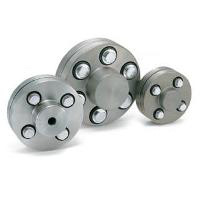
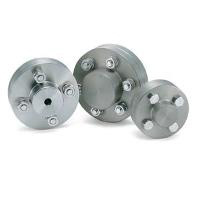

![SNS Flange Shape Flexible Shaft Coupling SCL] (Pump Mounting Side)](http://uk.misumi-ec.com/linked/material/mech/INT1/PHOTO/221004957493_001.jpg?$product_view_c$)
![SNS Flange Shape Fixating Axial Coupling [SRCL]](http://uk.misumi-ec.com/linked/material/mech/INT1/PHOTO/221004957471_001.jpg?$product_view_c$)
![SNSFlange Shape Flexible Shaft Coupling [SCL]](http://uk.misumi-ec.com/linked/material/mech/INT1/PHOTO/221004957482_001.jpg?$product_view_c$)
















